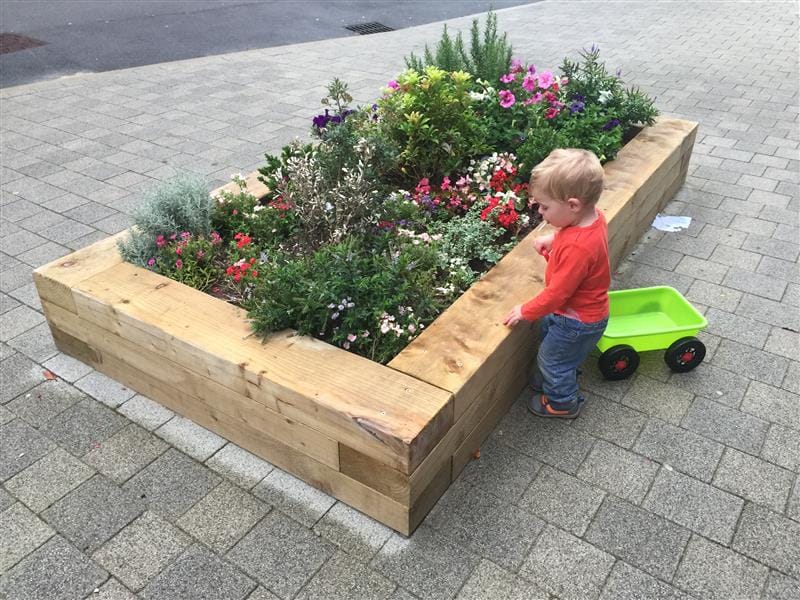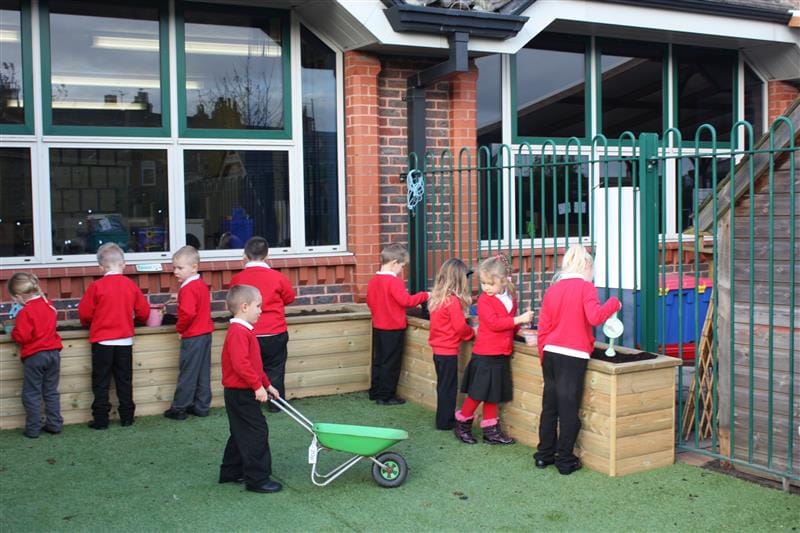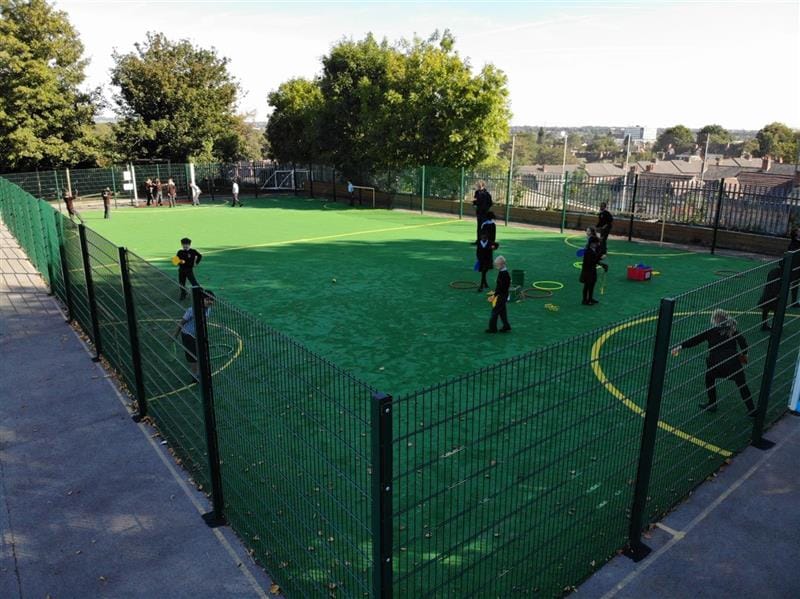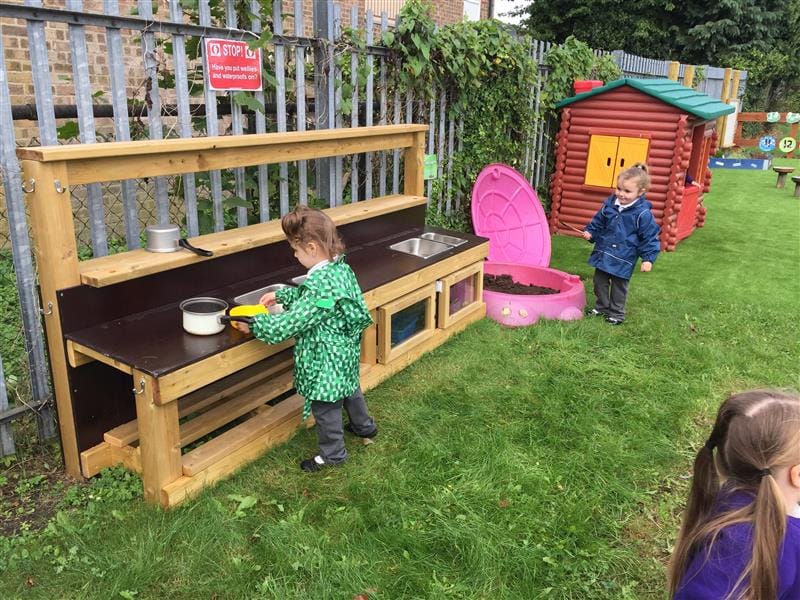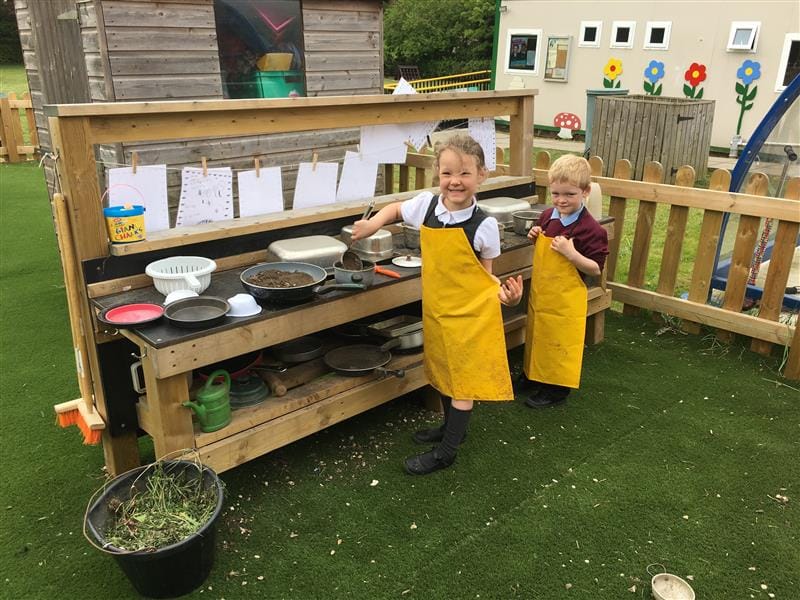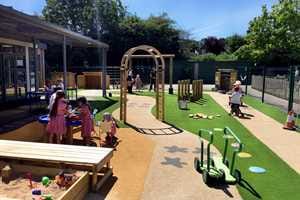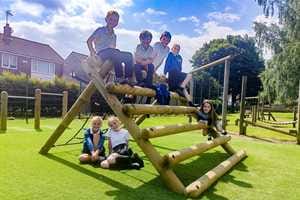
Lesson Ideas and Activities
Playground Activities To Help Tackle Childhood Obesity On Your School Playground
Childhood obesity is on the rise in the UK. Here we discuss the issue, what is causing it, and what schools can do to help tackle the problem.
We suggest some active playground activities, to help teach children about the importance of healthy eating and exercise.
There has been a lot in the press again recently, about rising concerns over childhood obesity.
The World Health Organisation, regards it as one of the most serious global public health challenges for the 21st century, because obese children have an increased risk of developing various health problems and are more likely to become obese adults.

The HSCIC National Child Measurement Programme England 2014/2015, revealed that around one third of children in Year 6 were leaving primary school overweight or obese.
Startlingly, the UK has the highest level of childhood obesity in Western Europe, and the problem is worse in deprived areas, with obesity being double that of children living in wealthier areas.
The Childhood Obesity Summit was recently held in London, to discuss the government’s Childhood Obesity Strategy and what further action is needed.
It raised concerns that despite various interventions, statistics suggest that there has been little real impact in reducing obesity in children. This is fuelling a rise in type 2 diabetes, heart disease and some cancers.
Cancer Research UK’s chief executive Sir Harpal Kumar says “Encouraging more exercise in schools is to be welcomed...we also need restrictions on marketing and promotion of unhealthy foods.”
Professor Lamine Mahdjoubi, from the University of West England, told an international conference in Bristol, that unless more suitable play opportunities are provided for children, a physical and mental illness “time bomb” is waiting to explode:
As councils cut spending on outdoor spaces and society encourages physical idleness, obesity is becoming an epidemic. Young people now face heart problems, diabetes and other diseases because of their sedentary lifestyles. This puts them at risk of premature death and confronts the NHS with a rocketing bill.

Surveys among children and young people, reveal that many of them would prefer to spend time enjoying healthy outdoor activities if only more were available to them. What we need to do, is overcome the barriers to outdoor play, fears for safety, lack of understanding of the importance of physical exercise or encouragement to go outside
Currently, there is too much time spent indoors using screens and limited access to outdoor play resources.
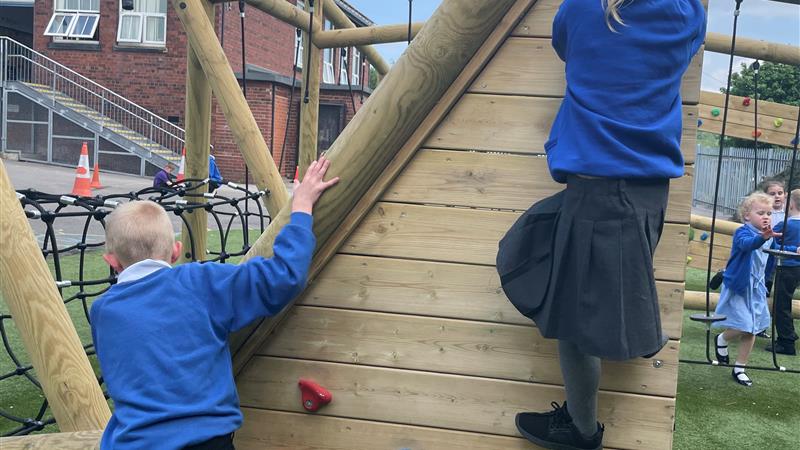
Open outdoor play spaces, tend to be more cost effective than indoor fitness centres and combine the benefits of fresh air, exercise and creative play and learning.
Teachers are getting wise to this and many schools are now much more forward thinking in their approach to outdoor activities and make good use of their school playground for physical activity.

The World Health Organisation and the NHS, provide guidelines on their websites as to what we can do as individuals to combat obesity and maintain a healthy body weight:
- “Children aged 5–17, should accumulate at least 60 minutes of moderate to vigorous intensity physical activity daily.
- Amounts of physical activity greater than 60 minutes provide additional health benefits.
- Most of the daily physical activity should be aerobic. Vigorous intensity activities should be incorporated, including those that strengthen muscle and bone, at least 3 times per week.”
The NHS lists FIVE key ways to help children achieve a healthy weight:
- “Be a good role model"
- Encourage 60 minutes of physical activity a day. Several short 5 or 10 minute bursts of activity throughout the day can be just as good as an hour-long stretch.
- Keep to child-size portions
- Eat healthy meals, drinks and snacks
- Less screen time and more sleep.”
The picture seems clear. A solid mixture of exercise and healthy eating is what is needed. Getting children outdoors and moving can help solve the problem of obesity, because the more a child moves, the more energy they expend and the more calories they burn.
And it isn’t hard to encourage them because they get to have fun at the same time!
Playground activities and games for healthy eating
There are many ways in which teachers can link healthy eating lesson plans to outdoor activities, rather like killing two birds with one stone.
Getting children moving, while learning about the importance of good nutrition and healthy eating at the same time, is a great way of instilling and reinforcing a clear understanding of how important it is to look after our bodies, and how to go about it.
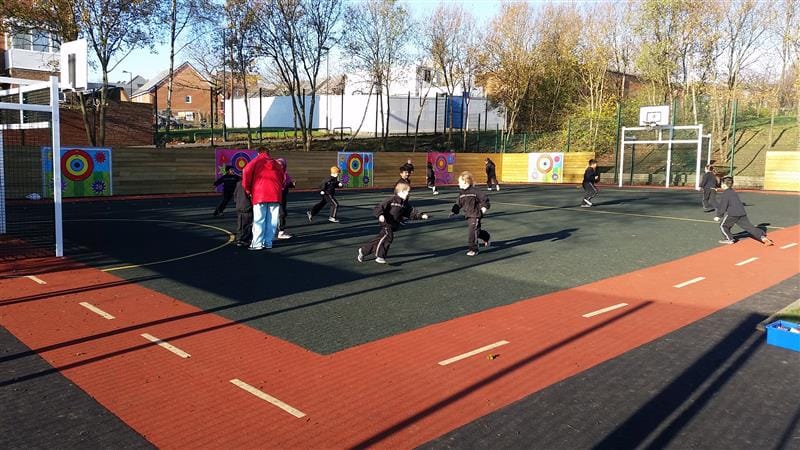
4 Steps to Create your own Fruit and Vegetable Garden
One of the very best ways to do this, is to create your own school allotment or growing area. A fruit and vegetable garden, is an excellent whole-school resource to be used for lessons throughout EYFS, Key Stage 1 and Key Stage 2.
Growing their own crops is a truly exciting, inspiring and hands on way of helping children to learn about healthy eating and where food comes from.
It can be used to educate them about science, soil, nutrition, crop rotation, life cycles of plants and the wildlife drawn to the area. It will raise their awareness of the seasonal nature of healthy foods and encourage them to try healthy options as they will love sampling their own produce.

Children should be allowed to be actively responsible for every stage of the process:
- Digging the soil,
- Planting the seeds or seedlings,
- Pruning and weeding,
- Filling carrying and pouring watering cans,
- Harvesting and lifting produce,
- Pushing and pulling wheelbarrows,
- Carrying waste to a composter
1. Find a growing spot
The first thing to do, is to find a good growing spot in your school grounds. It doesn’t have to be a huge space, even just a couple of metres square will do.
Pre-built Planters and Wildlife Areas, can be installed on existing grass or hard standing areas, which is perfect if there are restrictions as to where you can set up your growing area. The ideal spot will be open to sunlight and not over-exposed to the elements. Soil needs to be well drained.
2. Plan your crops
Talk to the children about the sort of things they would like to grow. This is a wonderful opportunity to talk to them about nutrition and healthy eating, and why the foods they can grow are good for them.
Encourage them to choose vegetables that are easy and quick to grow and generally successful, such as carrots, runner beans, potatoes, soft fruits, tomatoes and salads.
Product Spotlight
In amongst them, will be one or two things that children love to eat, as well as some new things to try. Anything that can be harvested by mid-July or that can be left to survive the holiday period until September, is good.
You may need to find some volunteers to look after them over the summer holiday, but that’s part of the fun and children will enjoy having the responsibility. Do not worry too much about when to start planting as different crops grow at different times of year so there is always something to do.
3. Planting your healthy crops
When it comes to planting, aim to plant broadly in rows with pathways in between, so that all the children have access to the produce. This is especially important for children with special educational needs and those with mobility issues, as everyone should be able to stay involved throughout the process.
Raised Planters are great as they are easy for everyone to reach. At the same time, don’t be too worried about presentation. It doesn’t matter if the lines aren’t super straight. Let the children be creative, go wild and do their own thing, they will enjoy it even more!
Take care of the area by trying to grow some different produce each year. It’s a good opportunity to teach children about crop rotation, balancing nutrients in the soil and reducing pests and disease.
Dig in some organic manures and fertilisers too. Children will absolutely love getting messy doing this - just make sure you have plenty of soap and warm water nearby!
4. Time to harvest...
Harvesting the produce is a fantastic time for children, as they get to see the results of their hard work and it can be so rewarding. It’s an essential time to reinforce their understanding of healthy eating.
Plucking beans off their stalks and popping out bright green peas, or tucking into juicy strawberries (even if there are only a few surviving to share out!) is such a treat, and yes, so much more appealing than the junk food alternatives.
Take a closer look at our selection of natural playground equipment here.
3 Healthy Eating Active Games
Take advantage of your school playground or Multi Use Games Area, by organising some active, calorie burning games based on a healthy eating theme.
Active games that get children moving are not just a great way of exercising. Because children will be having fun, it will help to increase their interest in the subject matter and subsequently help them to remember the facts and see them in context, so they can better apply what they are learning to their everyday lives.

Here are a few ideas to get started. For each of these games, you will first need to discuss with children background information about food choices. Ask them to take it in turns to name their favourite food, then discuss as a group whether and why it is nutritious or not.
Have a brainstorming session where children think of different foods and decide whether they are healthy. Discuss what factors or characteristics make food healthy or unhealthy, e.g. it contains vitamins or sugar.
You can view our Multi Use Games Areas here
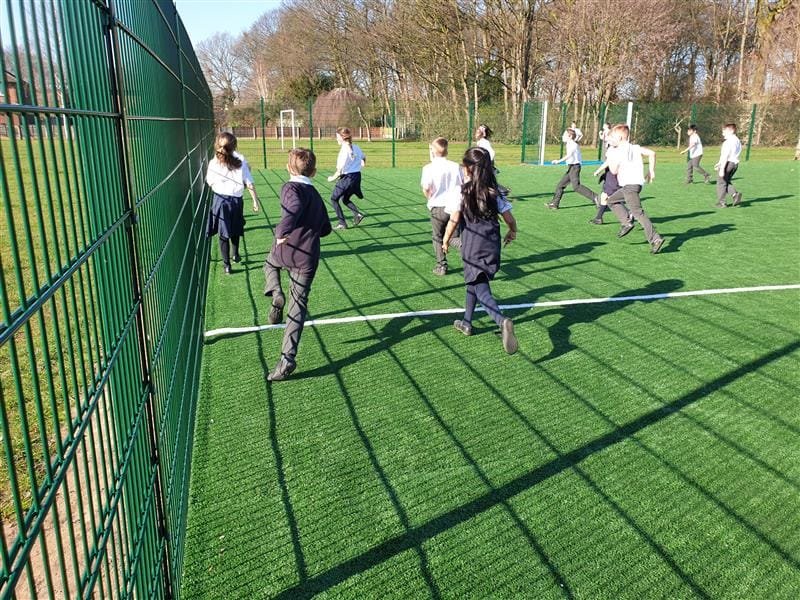
1. Red Food Green Food Race
- Talk to children first about what are classed as healthy (“green”) foods, and unhealthy (“red”) foods.
- One child acts as the caller and the rest as runners.
- The caller stand at one end of the Games Area with his/her back to the runners.
- The runners line up shoulder to shoulder at the opposite end of the Games Area.
- The caller shouts out a food item e.g. “apple!” or “sugar!”. If it is a healthy food, the runners should shout back “green!” and run forwards towards the caller. If it’s an unhealthy food, the runners shout “red!” and freeze on the spot.
- If anyone shouts out the wrong colour they return to the starting line.
- Without warning, the caller can suddenly spin around and shout “red!”. If runners are moving, they should freeze on the spot. The first two people who the caller catches moving, must return to the starting line.
- The first child who makes it across to the caller’s line is the “winner” and gets to become the caller. The existing caller joins in the line with everyone else and the game starts again.
2. Marvellous Mud Kitchen Medicine
This simple activity, allows early years’ learners to have some fun doing what they do best - getting messy!
Encourage children to be as creative as they like when cooking, baking and making potion in the Mud Kitchen.
Discuss with them, what they are making and what the ingredients are. Encourage them to go moving and hunting around the school grounds for natural materials to put into their recipes, but also provide some resources for them.

You could provide, empty cereal packets, dried pulses, toy fruit and veg. The resources you pick, must encourage children to mix, pour, stir, mash and generally have fun when in the kitchen.
As they are playing, engage them in conversation about healthy and unhealthy foods and what ingredients (real or imaginary), they are using and whether their potions are going to be healthy and why.
The idea is to get young children to start thinking about their food choices in a natural and positive way, so that good nutrition becomes part of their general way of thinking from an early age.
You can view our excellent Mud Kitchen here.
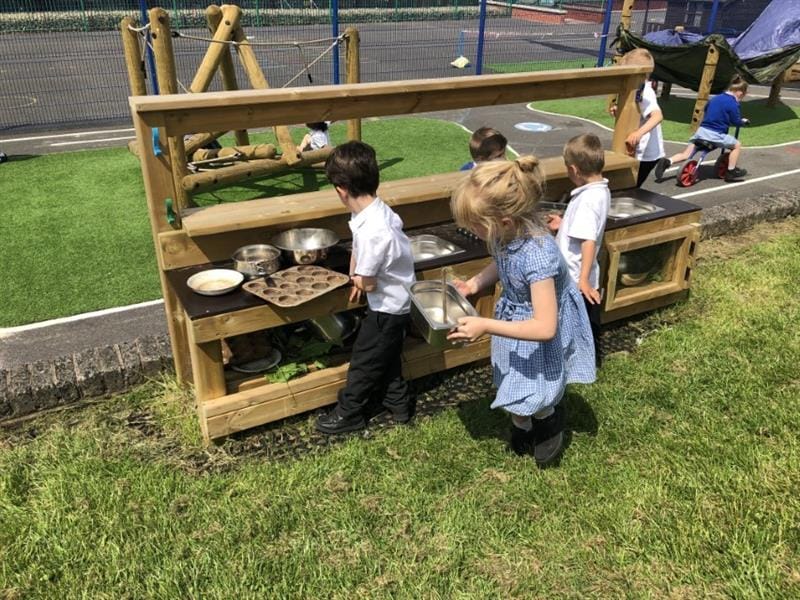
3. Playground Pairing
Provide children with stacks of old magazines that contain pictures of food. You can usually find free food magazines and leaflets at supermarkets.
Ask them to search through and cut out a large selection of healthy and unhealthy foods from all the different food groups.
You can vary this game, depending on how you want to split the food groups. Proteins, carbohydrates, fats, fibre, minerals and vitamins is one way, fruit and vegetables, meat and fish, dairy, starchy foods, fat and sugar is another, or you may think of alternatives.
Hang laminated cards with a food group written on each in different areas of the playground. Ask the children to run around the playground distributing the food pictures that they have cut out of the magazines, to pair them with each food group that they match.

Time them to get them moving more quickly! Once they have finished, walk around to each station with them to see if they have done it correctly and to talk about each food group in turn.
Some foods they have cut out might split across more than one food group so it’s a good opportunity to talk to them about the different nutrients that foods contain and whether they are good or bad.
You could extend the game by dividing the class into two teams, one for healthy foods and one for unhealthy foods.
Ask the teams to sort through the food items they have cut out and see which team can gather the most foods and take them to their “den” at the opposite end of the playground in three minutes.
Add in calorie-burning fun and excitement, by challenging them to transport their pictures across, around, under, over, up and down playground equipment.
For example, they could firstly cross an “assault course” before arriving at their den. It’s a race to see which team can find the most foods in their group and bring them back in the time given!
For more information on school playground equipment that will inspire children to get moving and make healthier food choices, simply Contact Us and we will be in touch to book a free consultation.
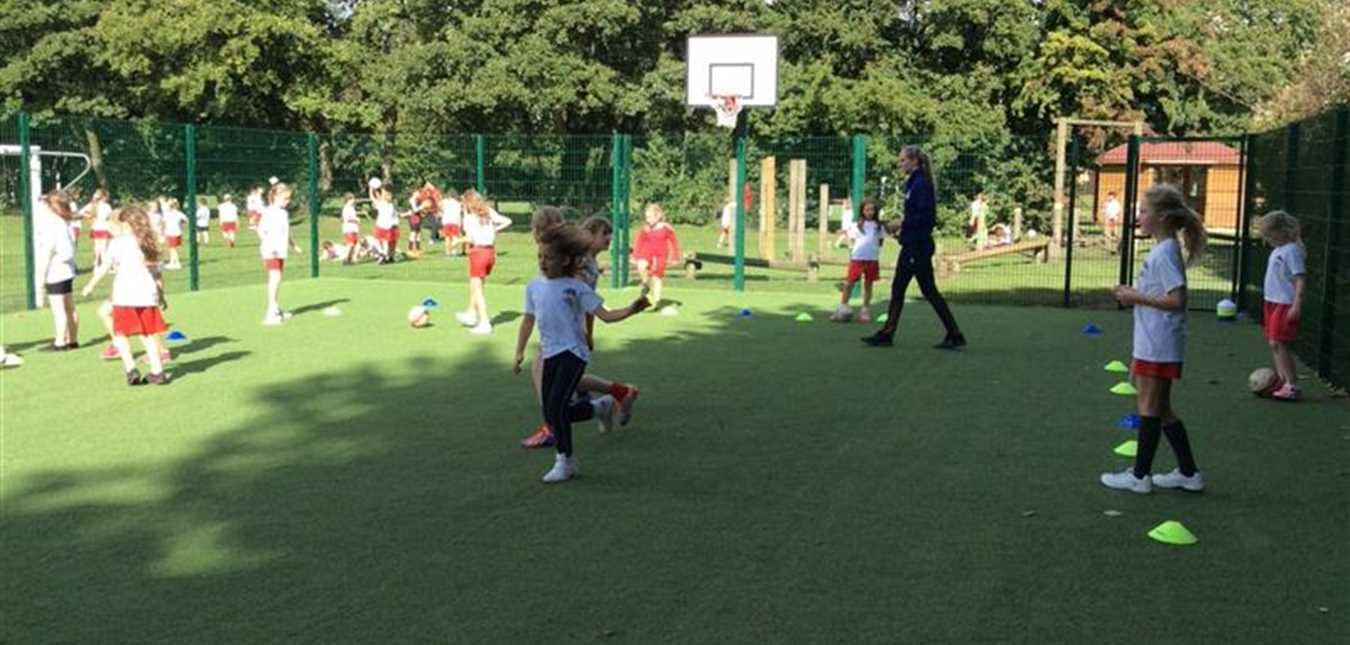
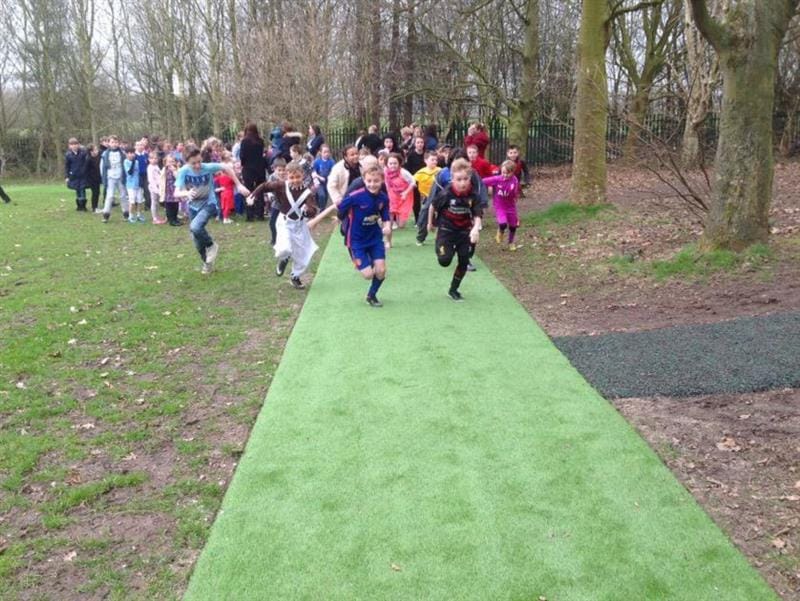
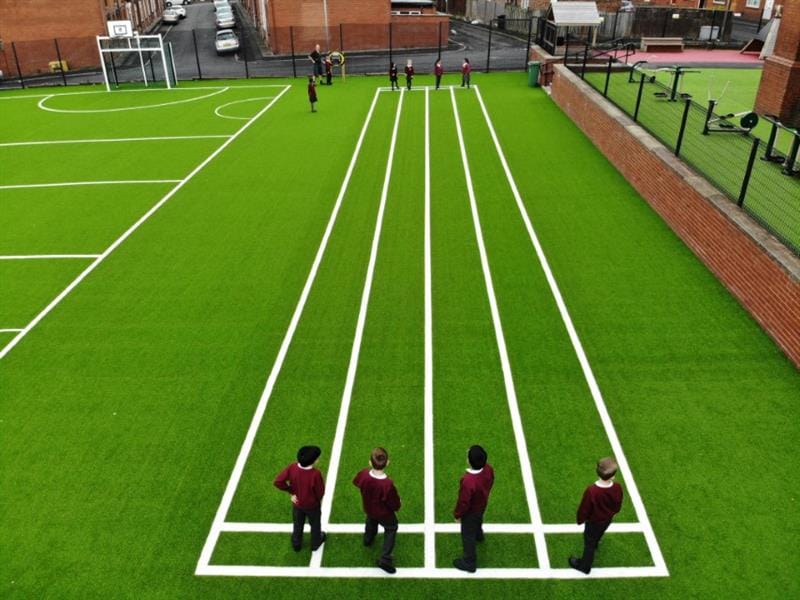
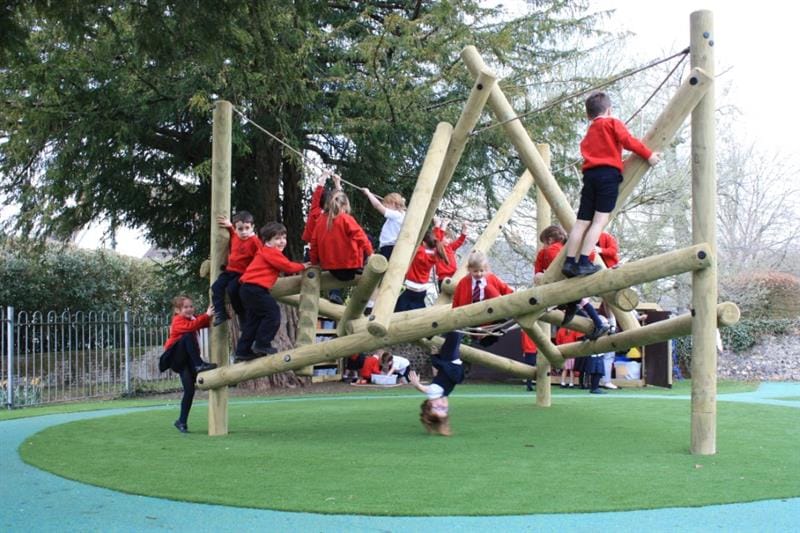
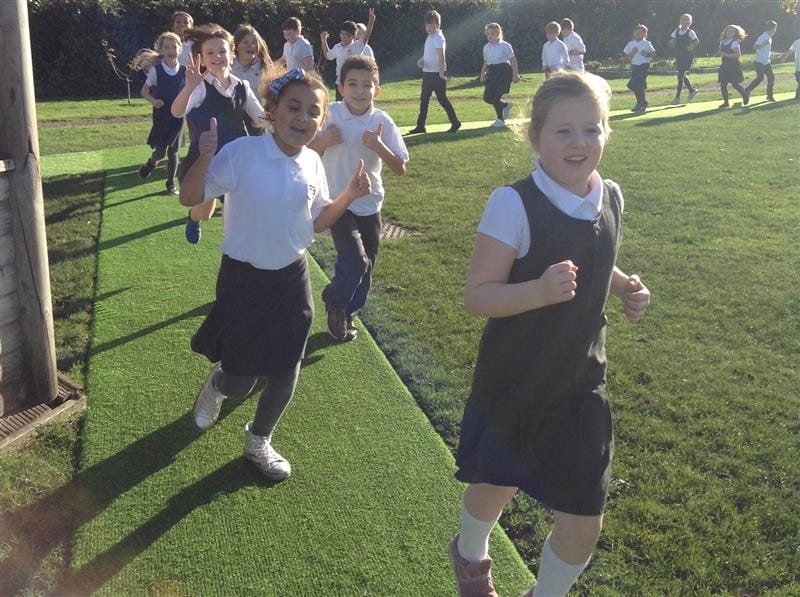
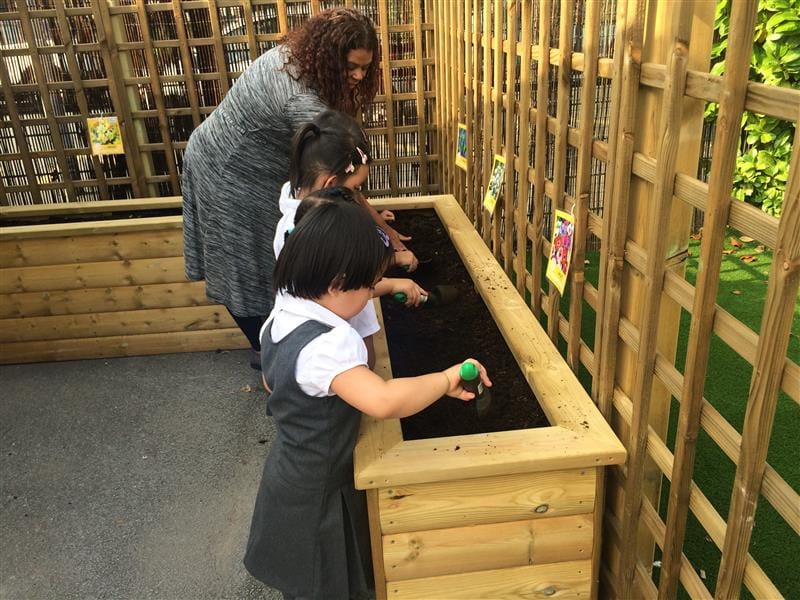
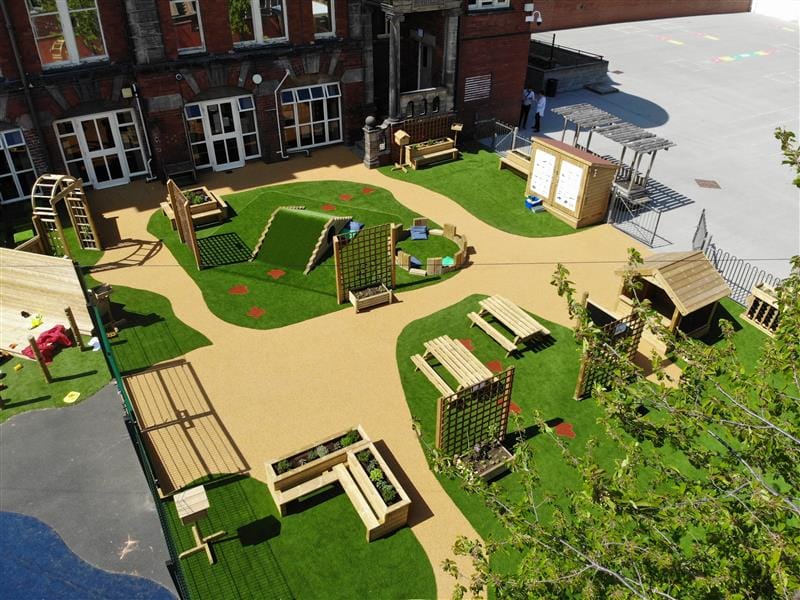


.jpg)

